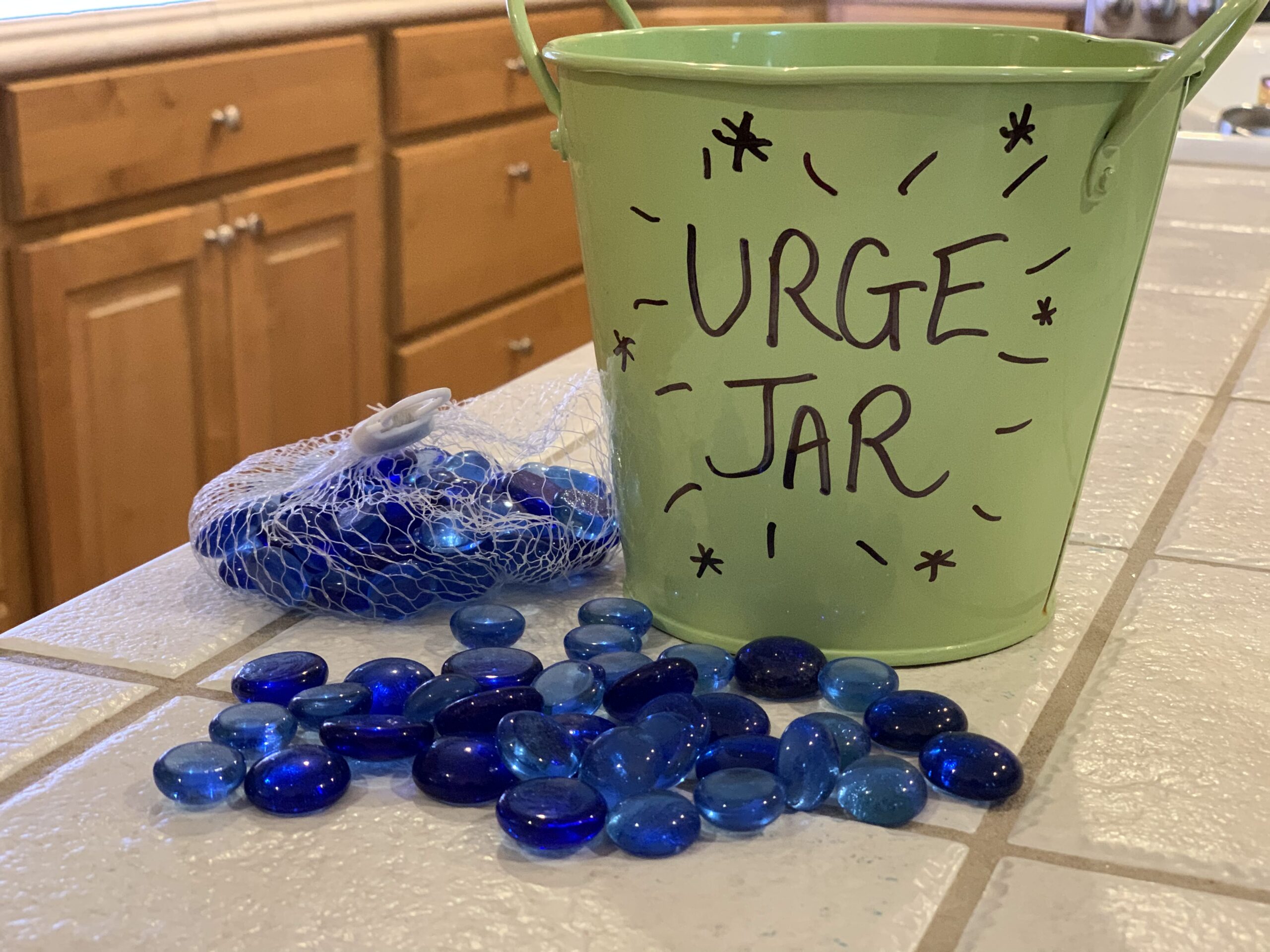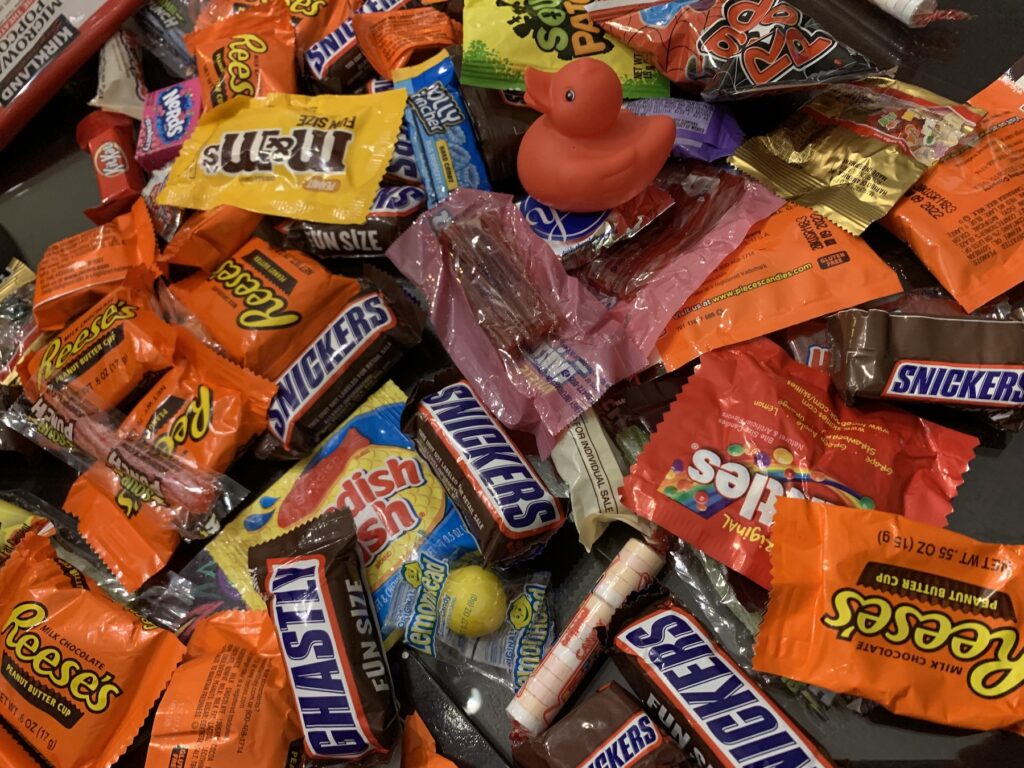 For the longest time – forever really – I’ve struggled with the duality of my mind, especially when it comes to impulse control. For example, this scenario plays out on regularly in my life:
For the longest time – forever really – I’ve struggled with the duality of my mind, especially when it comes to impulse control. For example, this scenario plays out on regularly in my life:
Me: I’m committing myself to eat clean, avoid sweets and carbs, and work out every morning!
Also me: immediately orders pizza for the fam, eats a bunch of it, treats myself to some chocolate afterward and then scrolls on my phone for an hour in the morning instead of getting up to work out.
I frustrate myself so much with this behavior. I’ve seen enough memes to know that it’s not just me – this split personality thing is a fairly common, human problem. Maybe that’s why we all need a life coach!
My issues with losing and maintaining weight have never been physical. It’s always been mental or emotional. It’s not a willpower thing. I simply have never been very good at controlling my impulses to eat yummy foods – especially in times of stress or anxiety. Honestly, I’m sure this shows up in many areas of my life.
But recently, listening to Brooke Castillo’s Life Coach School podcast, I heard about her concept of the Urge Jar and realized it sounded like something I could use. I googled “what is an urge jar” and came upon this blog post as well as another podcast explaining the concept and practice. Can’t hurt, I mused – and immediately started my own Urge Jar.
Using the Urge Jar to combat my urges and stay present in my higher mind has been LIFE CHANGING to say the least!
As Brooke explains, we literally have two parts of our brain that want different things. Our higher self is the prefrontal cortex or planner brain – the part of the brain associated with planning, thinking, impulse control and goal-setting.
Then there’s the lower self or the toddler brain – also known as the reptilian brain. This is the primitive part involved in basic urges related to thirst, hunger, sexuality and territoriality. When you have cravings for pizza or an incessant urge to eat chocolate, it likely comes from this “lower” brain.
So how can you maximize your planner brain and downplay your toddler brain? That’s where the Urge Jar comes in.
Please note that this blog post is my interpretation of Brooke’s teachings and in no way meant to represent her exact concept.
First, set up a jar or container in your home or office to serve as your Urge jar. Keep it out in full view so it stays top of mind. Get about 100 colored glass beads, pretty pebbles or marbles that you can drop into the jar to hear a satisfying “clink” sound.
Write down your plan – the behavior you want to model. The type of foods you want to eat. The time you want to get up and work out, and the kind of workout you’ll do. This is engaging your higher, planner brain.
Then, when your toddler brain chimes in with urges that go against this plan, instead of giving in to the urge, wait a few minutes or so and then drop a marble or pebble in your Urge Jar. Commit to doing this 100 times – fighting 100 urges. This could take you all day, or it could take two hours.
Each time you resist the urge, you reward yourself with a marble in the Urge Jar. By the time you’ve put 100 pebbles in your jar, you’ll feel really good about yourself. That’s 100 urges battled and won! Seeing and hearing results like this becomes fun and addictive, in a good way. We want to keep it going.
What’s more, you’ll start to get a “hit” or “bump” of dopamine through the simple act of dropping a marble in the jar. Your brain will get its reward from the dopamine and you won’t have to give in to the temptation itself. Once your toddler brain gets “paid,” it’s satisfied – the urges will stop.
Squelching unnecessary spending
The beauty of the Urge Jar is that this concept – giving your brain a satisfying bump while still not giving in to something you’re trying to avoid – can be done in a myriad of other ways.
For example, have you ever shopped online to your heart’s content and then simply abandoned the shopping cart? Retailers hate this, of course – and I’d certainly never recommend doing in in an actual store, where a poor worker would have to put everything back on the shelves. But online shopping and then closing the browser window is a victimless crime – and best of all, it gives your brain that satisfying “bump” without making actual purchases.
You can also fill your online shopping cart and then save it for later – this has the same immensely satisfying effect. After all, your brain doesn’t care if you actually get the stuff – it just likes the “hit” of buying it. Realizing this has saved me a lot of money and heartache. I actually don’t want any more stuff – I just want the fun of “buying” it (or tricking my brain into thinking I am)!
What other ways could you put this Urge Jar concept to work in your own life to help with unwanted food cravings, shopping temptations or other habits you’re trying to get the better of? I continue to work at this practice and use my thoughts and brain to further my goals and higher purpose. It’s something I have to stay focused on – it’s all too easy to fall back into bad habits when we’re not paying attention.
I’d love to hear your thoughts on the Urge Jar and how you’ve been successful with this technique. I love little jedi mind tricks like this one, os if you know of any others, I’m all ears. Leave me a note below in the comments or over on Facebook after you’ve given the Urge Jar a try!




This is a great idea. I still give myself a sticker on calendar for working out. I’m going start me an urge jar. Thanks for sharing.
I’m thinking about putting some money in a jar everyday that I am sugar and flour free and saving up to buy something nice with the money!
I love this idea – you’ll have to let me know how it works.
Hi Lara K.
I just listened to the podcast – earlier before I read your article – and something very important what Brooke explains in her podcast is that it is not the RESISTING the urge, what brings the “downplaying of your reptile brain”. It is the exact opposite of not trying to push the feeling away and giving energy out for using your will power to “fight it”, but letting the feeling come to you and NOT REACTING to it (not resisting it), letting it through your mind and work through it, just like you would do with an emotion (where many of people actually struggle, such as me :), since they do not know how to work with emotions).
I suppose your take on it could also work for some people and I do not think you left out this important piece of information on purpose – nobody is perfect :), just make sure to share full information in your blog, especially when referring to somebody else`s work. Also I would not try to compare the reward system to being “addictive”, since many people, who seek out this sort of help are most likely fighting addictive behaviour, which is usually not a way out of any addiction… to replace with another type of addiction.
I hope my comment will help you in a constructive way to keep on your work online ;-).
Best, Lucie
Thanks, Lucie – both for your visit and for your comment. I have added a disclaimer to my post so it is clear that this is meant to be MY interpretation of Brooke’s teachings, and not an exact replica of her concept.